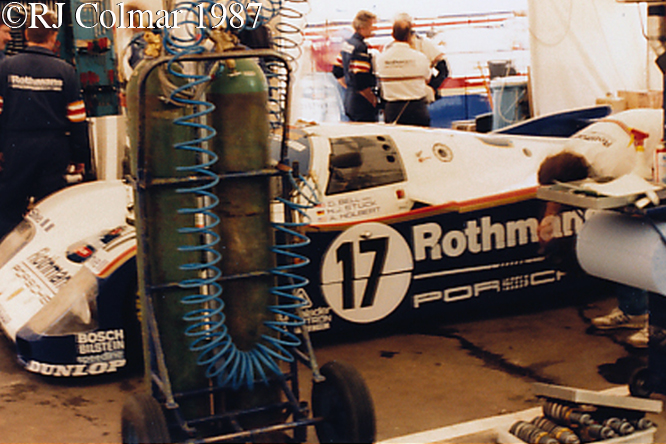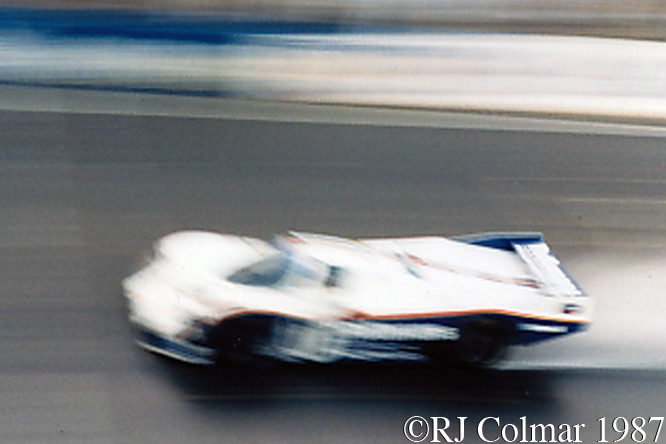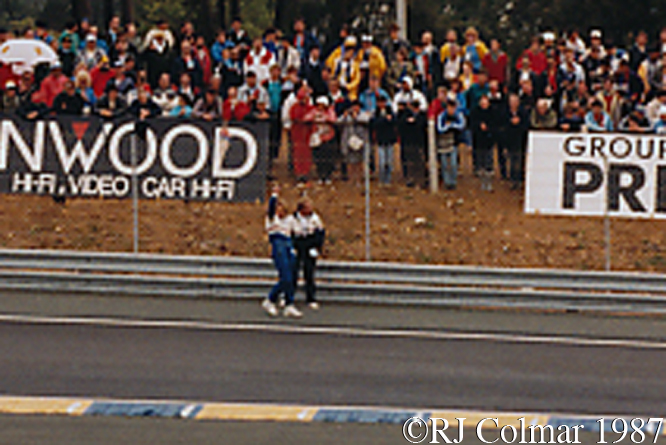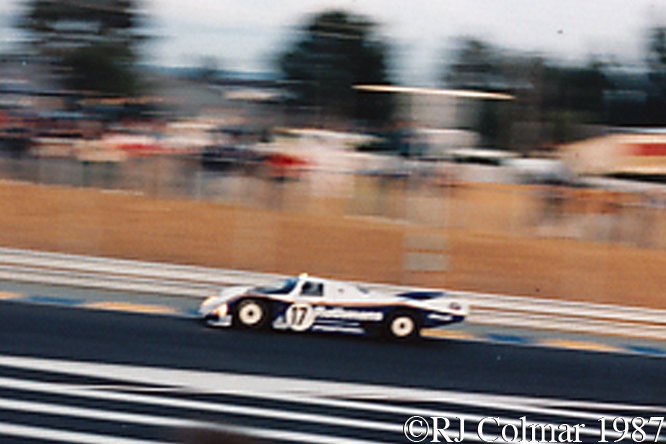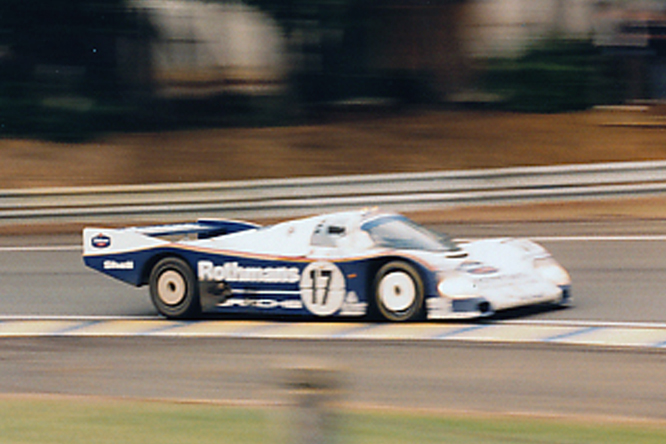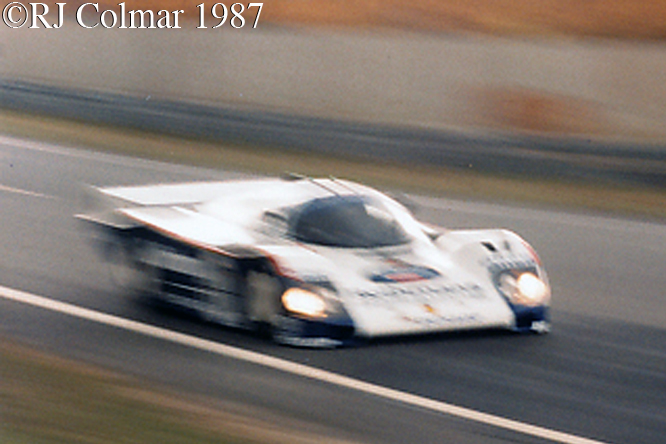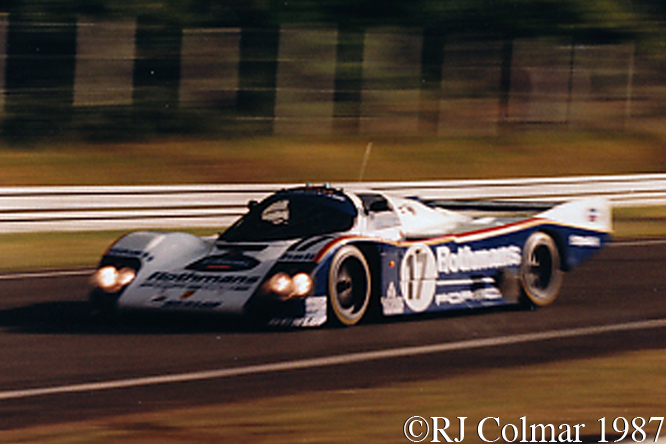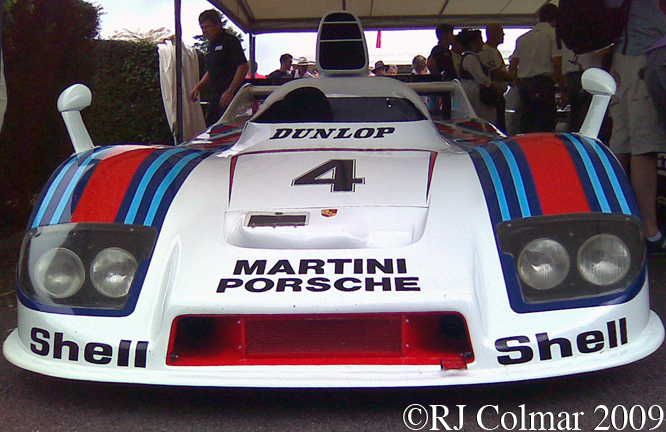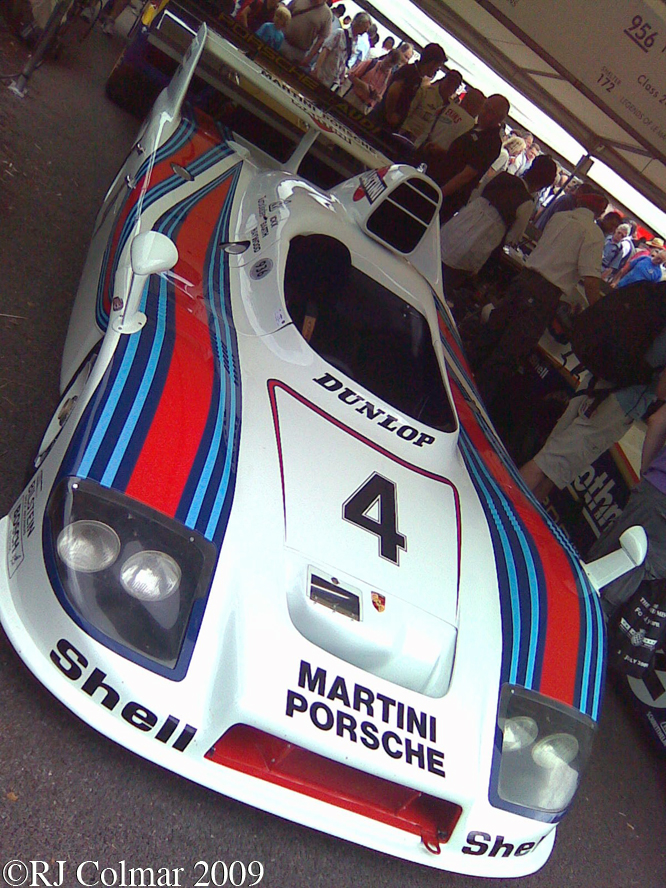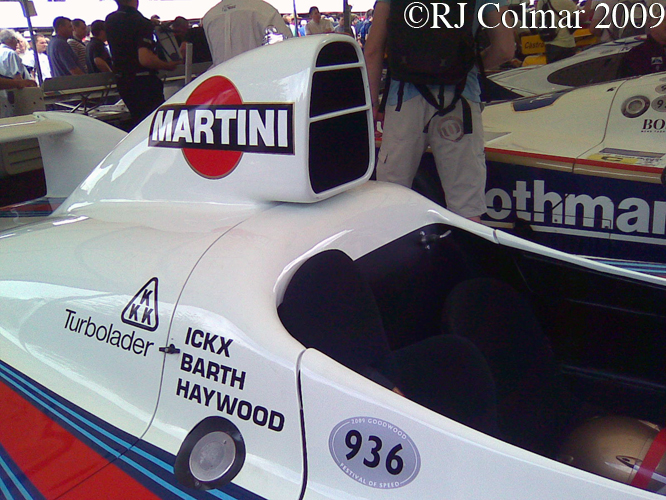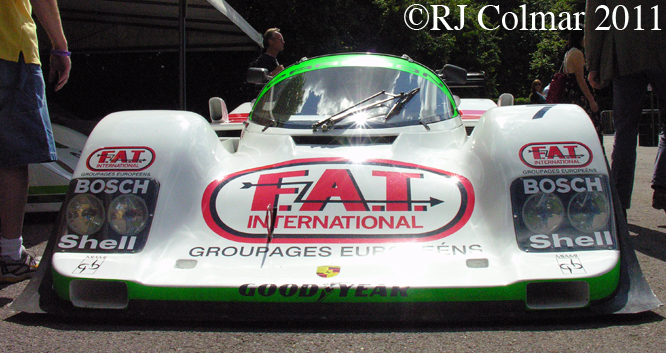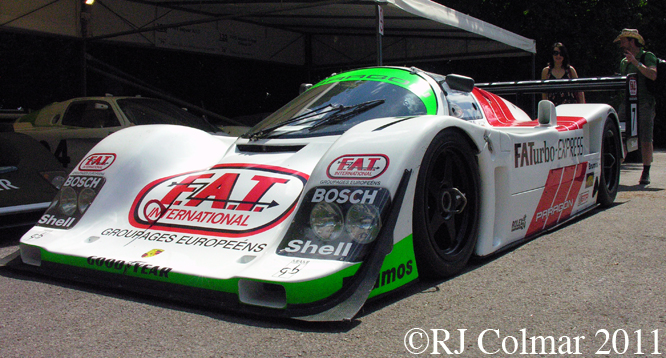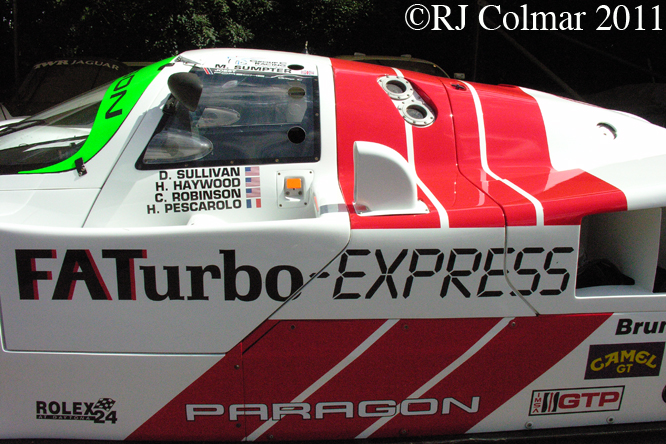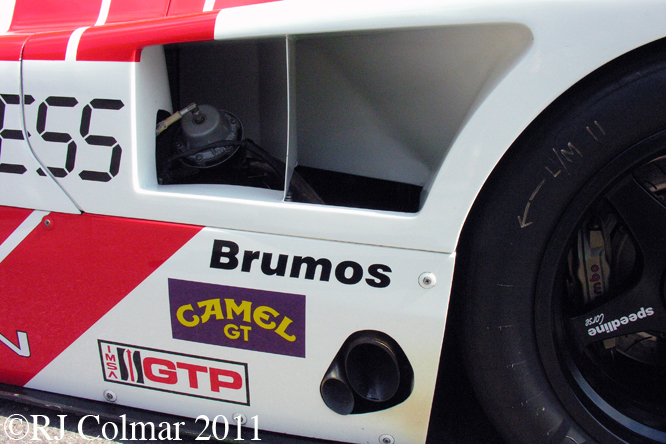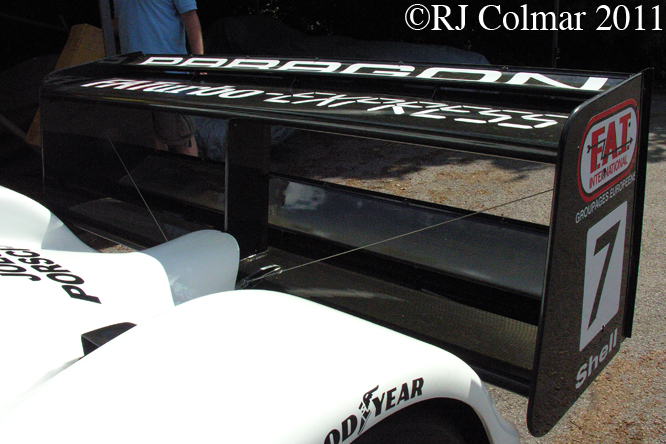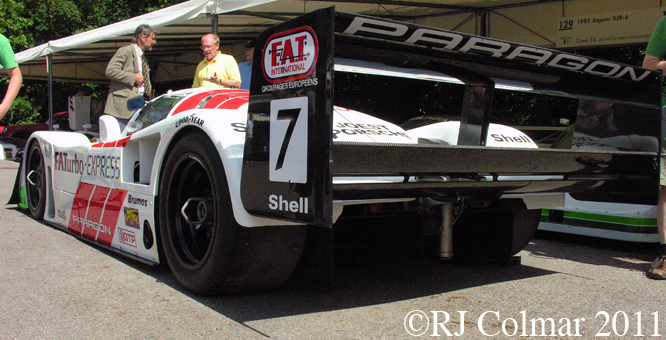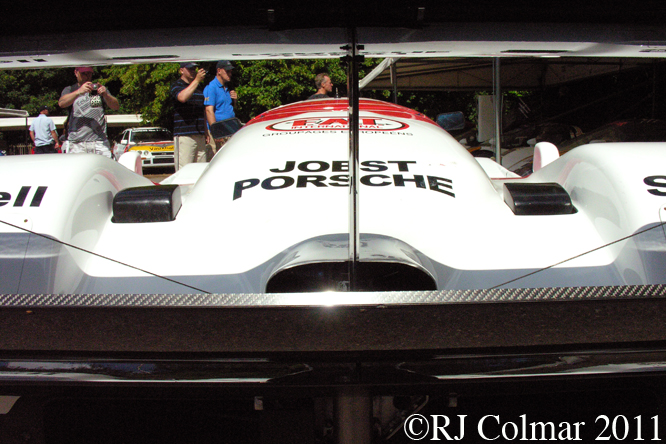On our fourth visit to this years Rolex Monterey Motorsports Reunion I’ll be looking at some of the Porsches and Porsche powered cars present.
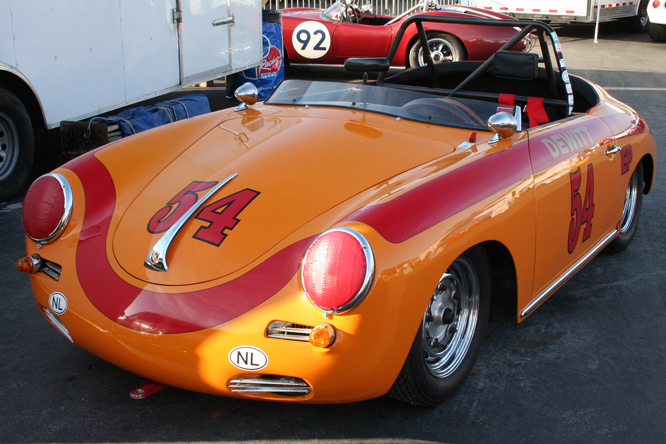
First up the 1955 Porsche 1500 Super Continental owned and driven by Clinton deWitt, US Porsche importer Max Hoffman had the 1500 Continental supersede the 1500 America in 1955 with the less powerful ‘normal’ motors because he thought they would give his customers better low engine speed performance than the more powerful “Super” motors, the inverse of what a race car needs. The Continental name did not last long because objections from Ford who used the Continental name at that time for a stand alone brand.
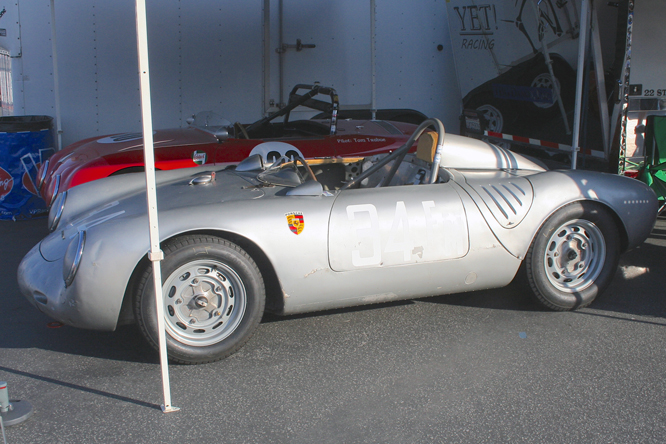
Porsche 550’s have a long tradition of being raced on the East and West coast of North America the 1955 34 F Modified 550 A belongs to Tom Tarbue a regular visitor to the Rolex Monterey Motorsports Reunion.
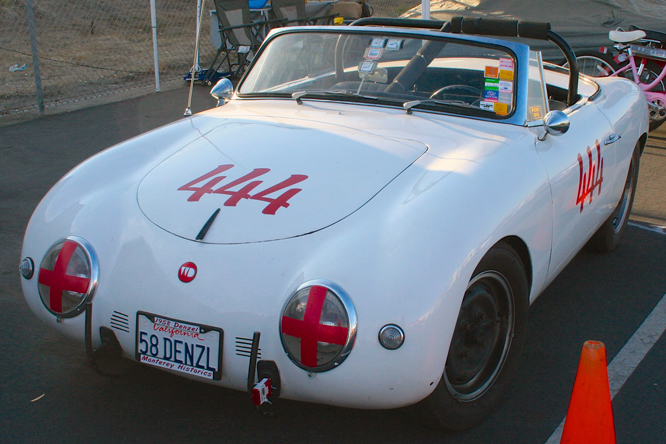
Strictly speaking the 1958 Denzel 1300 Roadster owned and driven to Terry Sullivan does not belong in this blog since Wolfgang Denzel came up with his Roadster completely independently of Porsche and like Porsche developed his own range of performance parts for use in motors sourced from contemporary Volkswagen Beetles, but I included it just for the benefit of disambiguation.
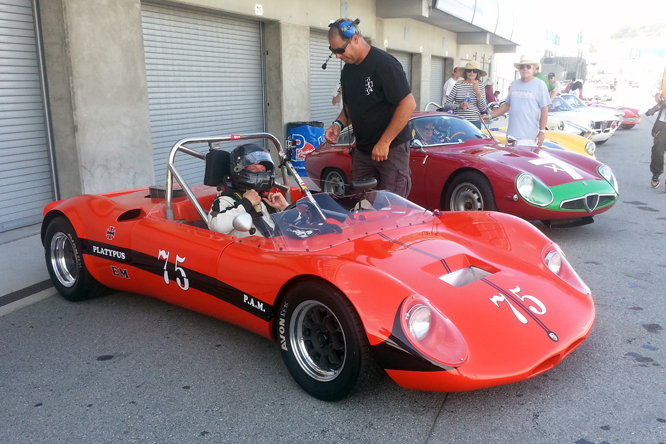
Scooter Patrick, Hans Adam, and Don Mitchell are credited with building the Porsche powered 1964 PAM Platypus out of P.A.M. Foreign Cars of Hermosa Beach, California for NO FEAR pilot Miles Gupton who raced the car with a number of different Porsche motors finishing 1964 as runner-up West Coast Champion, second only to Frank Monise’s Lotus 23B. The car was latter fitted an Oldsmobile V8 but as since been restored with a 2 litre Porsche 901 motor and is currently run by owner driver Arthur Conner.
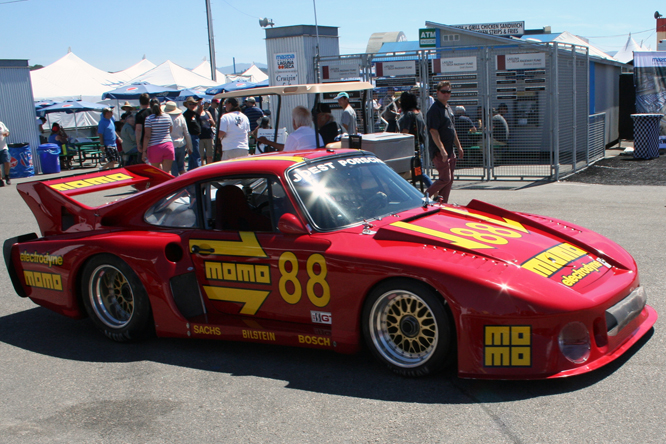
From 1977 the story of the Porsche 935 became increasingly confusing with the works offering 10 ’76 935 spec customer cars known as 935/77A’s while proceeding with their own development plan on the works 935/77 that featured improved aerodynamics that necessitated a more inclined second rear screen which covered the mandated original. The works 935/77 also adopted a twin turbo motor to stay ahead of the expected competition from a turbocharged BMW CSL. Meanwhile the Kremer brothers had been developing it’s own K series of 935’s which were the class of the field at Le Mans in 1979 when a K3 took overall honours, to keep up Joest Racing, better known these days for their exploits at Le Mans with Audi, developed there own version of the 935 known as the 935J above is the 935 J 000 00012 one of two cars that appeared in 1980 for the Momo sponsored Electrodyne racing. This car, now owned by William Chip E Connor, only recorded the one race win at Daytona in July 1981 when Mauricio de Narvaez and Hurley Haywood drove the now DeNarvaez entered car to victory lane in the Paul Revere 250 at Daytona.
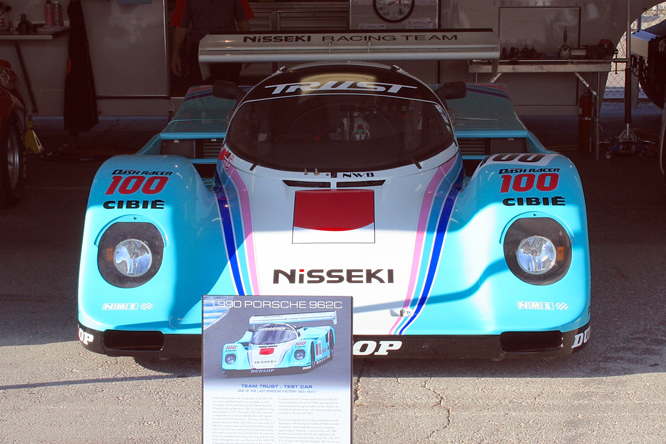
Finally we have the 962C chassis #962-170 being offered for sale by Canepa said to be an unraced spare, one of the last four 962’s built in 1991. While I do not doubt it was never raced I wonder if as well as being sent to Team Trust in Japan sans engine it was also sent sans factory body work since to the best of my knowledge no factory supplied 962 was ever supplied with a central pillar mounted rear wing or a nose with single head lamps on either side, where as the likes of Britten Lloyd Racing, from whom Trust also bought a 962 chassis, Kremer and Joest all built a variety of body variants for the 962 with unusual headlight arrangements and centrally mounted rear wings.
My thanks to Geoffrey Horton and Karl Krause for organising and taking today’s photographs respectively.
Thanks for joining me on this “Monterey Porsches” edition of “Gettin’ a li’l psycho on tyres” I hope you will join me again tomorrow for Ferrari Friday. Don’t forget to come back now !


